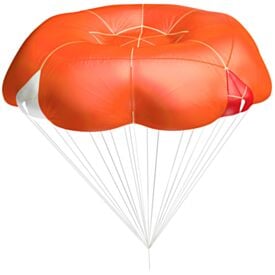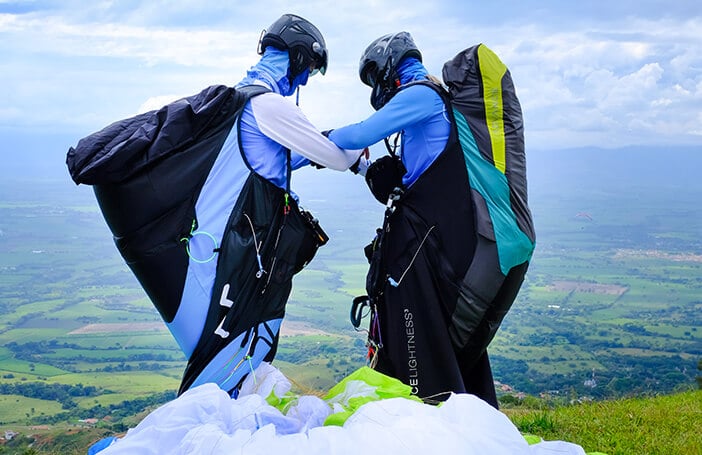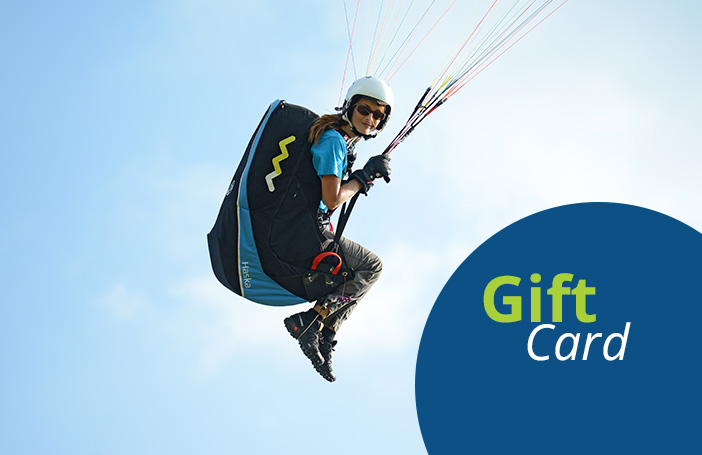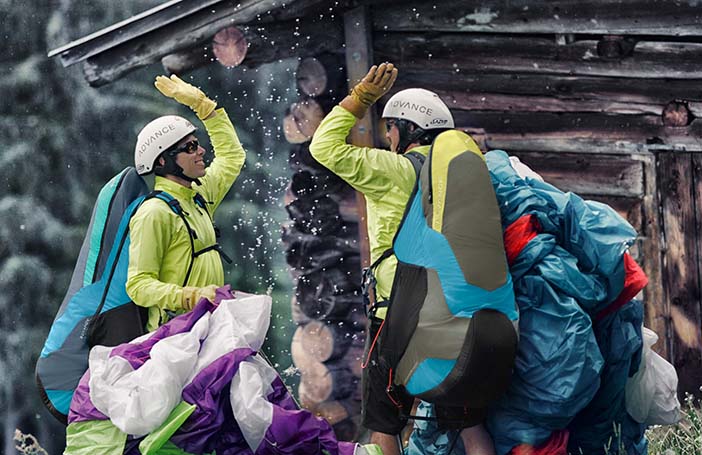Technical data
Size
|
XS
|
S
|
M
|
|
Cells
|
35
|
35
|
35
|
|
Area flat (m²)
|
16.3
|
18.7
|
21.1
|
|
Area projected (m²)
|
14.00
|
16.00
|
18.10
|
|
Wingspan flat (m)
|
8.4
|
9.0
|
9.6
|
|
Wingspan projected (m)
|
6.75
|
7.24
|
7.69
|
|
Aspect ratio flat
|
4.33
|
4.33
|
4.33
|
|
Aspect ratio projected
|
3.27
|
3.27
|
3.27
|
|
min. profile depth (cm)
|
95
|
102
|
109
|
|
max. profile depth (cm)
|
237
|
254
|
269
|
|
Glider weight (kg)*
|
2.4*
|
2.6*
|
2.8*
|
|
Certified weight range (kg) EN/LTF B
|
/
|
50 - 85
|
65 - 105
|
|
Certified weight range (kg) EN/LTF C
|
50 - 95
|
86 - 105
|
106 - 120
|
*Glider weights with optional extra ultralight Dyneema-Risers. For the standard Regular-Risers (recommended) add approximately 200 grams.
Weight range
The application range of the TONIC2 is extremely versatile, depending on the size you choose. The reactions vary depending on the glider size and the corresponding wing loading. With low wing loading the TONIC2 is suitable for thermal flying. With high wing loading it becomes a real mini wing, a strong-wind rocket on cliffs and dunes.
The graphic below is meant as a guide to help you choose the right size. If in doubt, seek expert advice!

Colours
Standard Colours: Mustard and Lind

Package includes
- 1 x TONIC2 wing
- 1x Compression strap
- 1x Inner bag for glider
- 1x Riser bag
- Loops & Hooks
- 1x BASIC GUIDE
- 1x Bandana
- 1x Self-adhesive repair patch
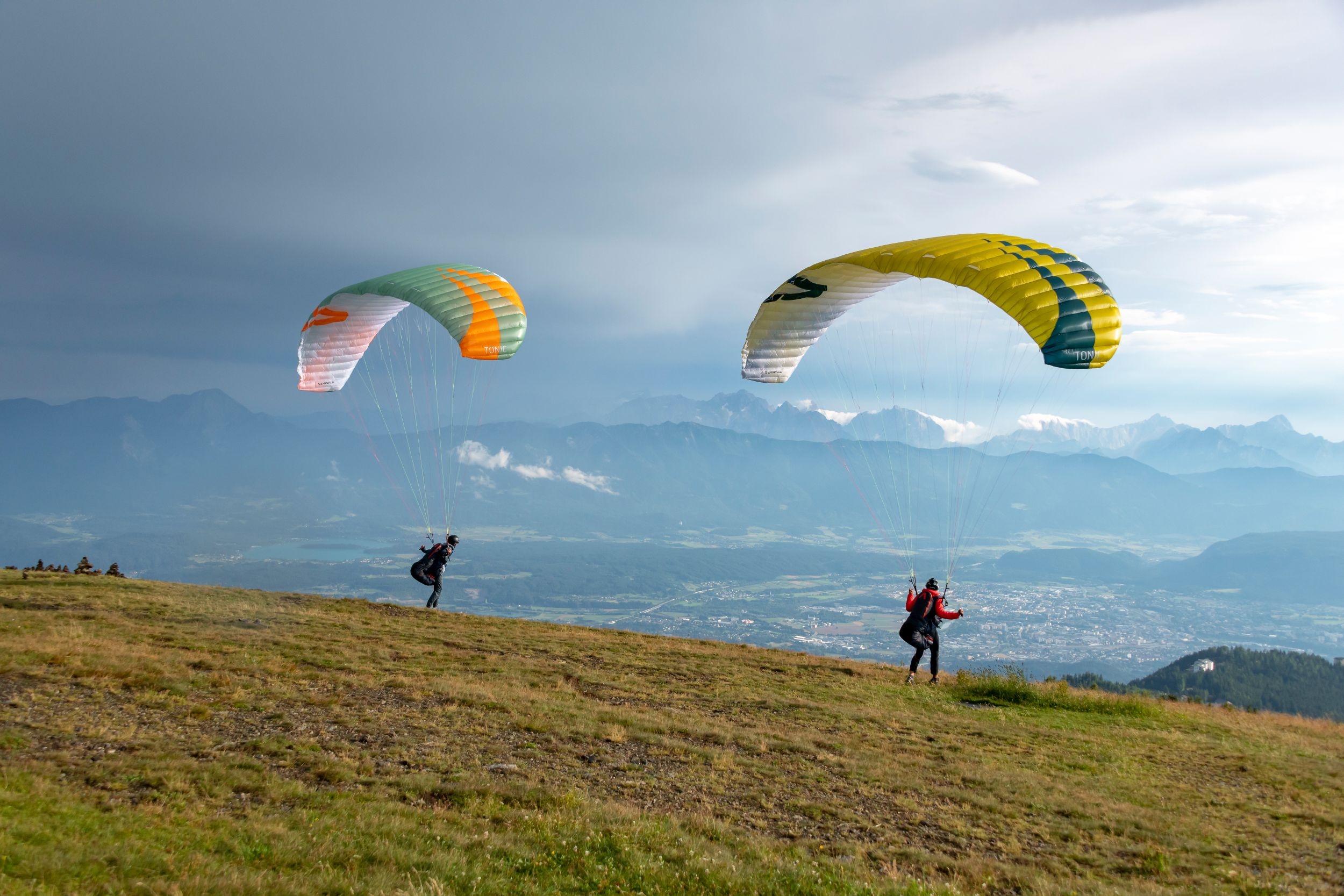
The fun machine.
Energetic. Direct.
The TONIC2 is not only a perfect strong-wind glider but also an ideal practice glider for ground-handling, wingover and looping training and a perfect companion for hike&fly tours. It has enough performance to glide out of every valley or even stay up on thermal days.
A carefully selected mix of materials ensures the necessary robustness in dunes as well as low weight for hike&fly. A special feature is the trimmer riser with which the speed window can be significantly increased. One thing is common to all sizes: The TONIC2 is extremely easy to handle, extremely fun in the air and extremely tough!
“The fun machine for everyone. For dune flying or freestyle – I always take my TONIC with me on vacation!”
- Kilian Hallweger, skywalk team pilot, travel enthusiast, 2. place DHV XC standard 2019
How does the TONIC2 fly?
The TONIC2 can be laid out in the smallest area due to its small span and short lines. Launch preparations are incomparably easy. A tug on the lines and the canopy rises compactly and evenly. Because the TONIC2 develops lift fast, the pilot takes off quickly – this was an important point in the specifications when developing the new mini-wing.
The TONIC2 immediately converts control inputs and weight shifting into high banks and steep curves. The reactions are moderate and manageable, but if you have no experience with mini-wings, you should approach this feature slowly.
The reactions vary depending on the size and the corresponding surface loading. With a low load, the TONIC2 is suitable for thermal flying, but if it is heavily loaded it becomes a strong-wind rocket on cliffs and dunes.
In turbulence, the TONIC2 remains stable but requires an active flying style due to its agility – especially at high wing loading. The brake line pressure increases sharply right up to the stall, and you can adjust your speed precisely for landing with the brakes.
Features
Jet Flaps

Skywalk jet flaps extend the green arc as you approach the stall point, which substantially increases safety and also improves climb performance.
Rigid Foil

The Rigid Foil nylon wires on the leading edge help maintain its shape and ensure constant ram air pressure. Advantages: better takeoff behaviour, more performance and lower canopy weight.
3D-Shaping
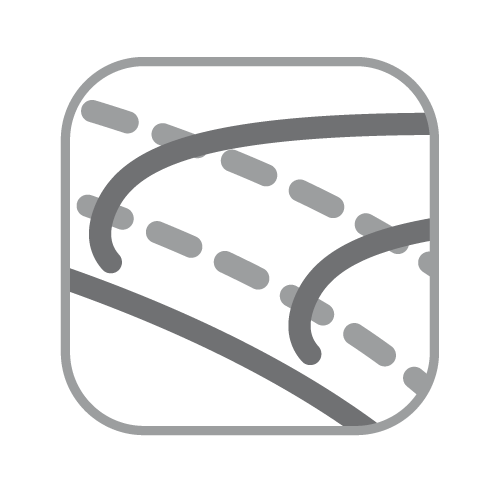
A precise calculation of the leading edge geometry and the installation of an additional strip of fabric reduce wrinkling in this sensitive part of the glider. Advantages: exact wing shape, more performance.
Loops & Hooks

Skywalk loops and straps on the topsail make it possible to layout the canopy in the most difficult alpine terrain.
Mini Ribs
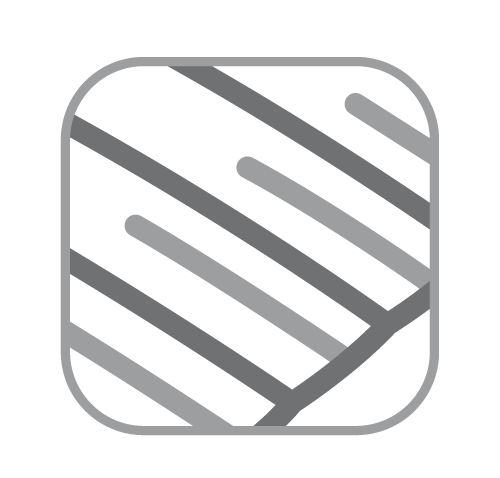
Doubling the number of cells at the trailing edge increases its shape stability substantially. Advantage: fewer vortices improve the aerodynamics and with it the performance.
Shark Nose
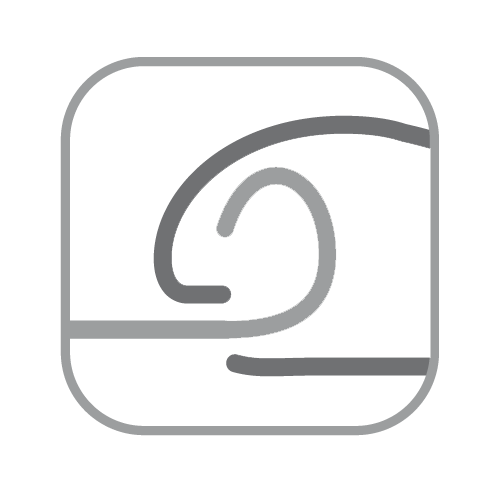
Together with corresponding wing design, the shark nose technology improves pressure distribution in the canopy substantially. Advantages: much more solid flying feeling and substantial performance gain, especially when gliding on bar.
Automatic Sand Release System
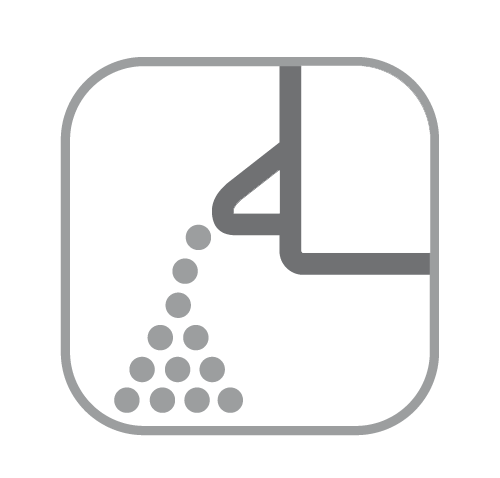
Porous openings of the profile ribs at the trailing edge ensure that sand and dirt in the glider are automatically guided to the wingtip where they can trickle out. This helps preserve the material and “relieves” the trailing edge.
Materials
|
Upper sail
|
Porcher Skytex 38g / Dominico Dokdo 32g
|
|
Lower sail
|
Porcher Skytex 27g
|
|
Ribs
|
Skytex 27 hard
|
|
Bands
|
Skytex 27 hard
|
|
Main lines
|
Liros PPSLS 180
|
|
Middle lines
|
Liros PPSLS 125/65
|
|
Toplines
|
Liros DC60
|
|
Brake lines
|
Liros DFLP 200/32, Liros PPSLS 65
|
|
Regular-Risers*
|
Güth & Wolf 12mm Gurtband
|
|
Dyneema-Risers*
|
Liros 6mm Dyneema
|
* Dyneema Risers are an optional extra. The standard included Regular-Risers are recommended, for better handling and material stability.
Service info & FAQ
Read Skywalk service info and answers to FAQ.
Downloads
Certification
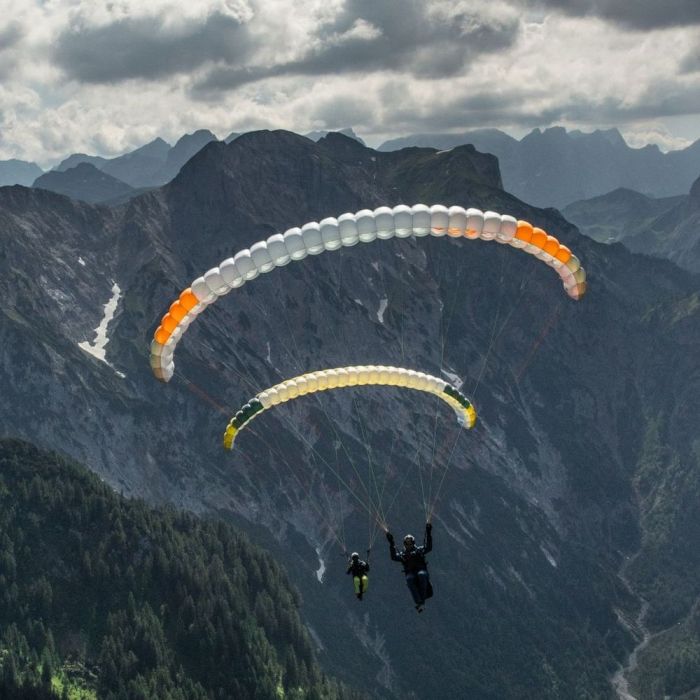
![]()













